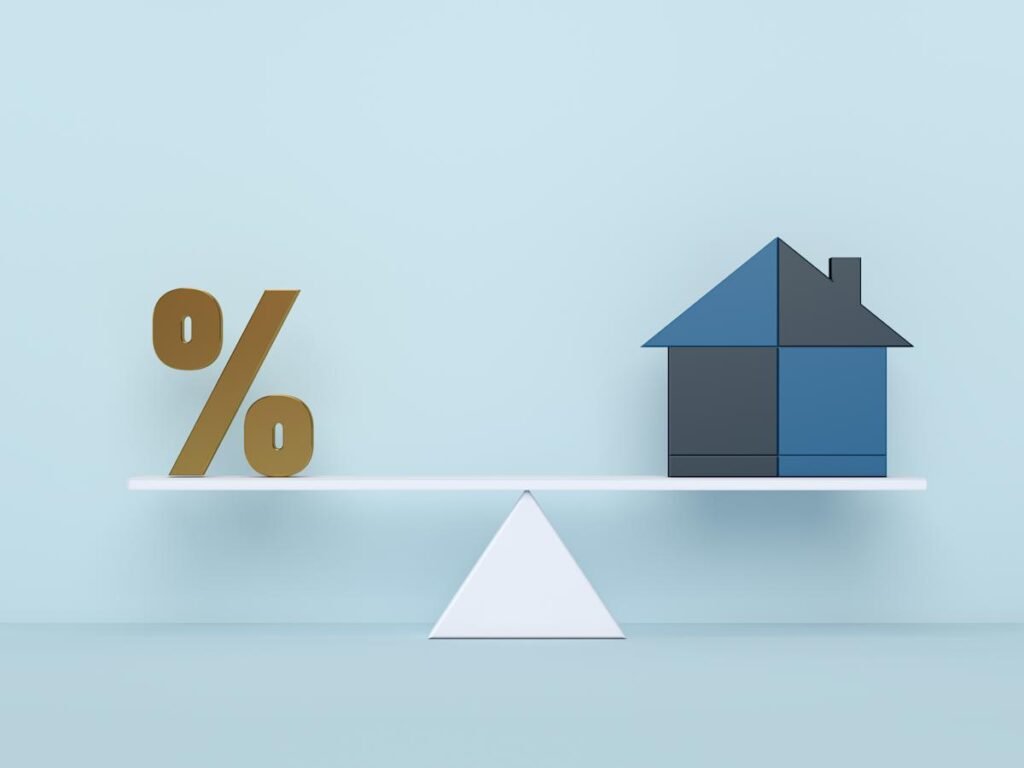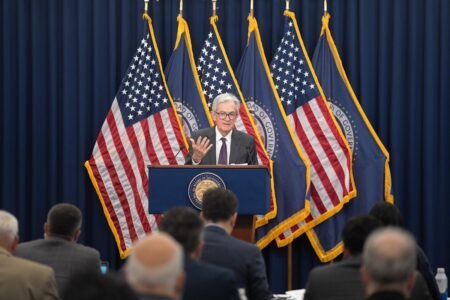When it comes to buying and owning a house, two significant variables will impact how much you spend on your mortgage: home prices and interest rates. Both play a crucial role in the total cost of your mortgage. This raises an essential question for home buyers: Is it better to buy a less expensive house with a higher interest rate or a more expensive house with a lower interest rate?
Deciding whether to prioritize a low home price or a low mortgage interest rate is more than just a simple mathematical question. That’s because there tends to be an inverse correlation between home prices and interest rates in the housing market. Specifically, home prices typically increase when interest rates are low and decrease when rates are higher.
This relationship is based on the economic principle of supply and demand. In this case, interest rates can affect the demand for homes in the housing market. Lower interest rates generally lead to increased demand for houses, which in turn causes home sellers to set higher home prices. On the other hand, higher interest rates can reduce demand for homes, causing sellers to lower their prices to entice potential buyers, which in turn leads to a decline in home values.
Calculating the affordability of a home depends on three different aspects of the home sale: the down payment, the monthly mortgage payment, and the lifetime cost of the home loan. Here’s how interest rates versus house prices affect each of those factors.
Conventional loans require a down payment. Home buyers who want to avoid paying for private mortgage insurance (PMI) must put down at least 20%, although mortgage lenders may accept as little as 3% down on conventional loans. According to recent Redfin data, the average down payment in Q3 2025 was 14.4% (a median of $30,400).
If you purchase a home with a lower price but a higher interest rate, your down payment can be more affordable. For example, let’s say you purchase a $220,000 home while interest rates are high. You can put down a 20% down payment, or $44,000, and get a 30-year fixed-rate mortgage with a 6.25% interest rate.
But if you waited for interest rates to fall before buying a home, the same house may now be selling for $300,000. Although 30-year mortgages may now have mortgage rates as low as 6% because you waited, you would need $60,000 to make a 20% down payment and avoid PMI.
Your monthly mortgage payment depends on several factors, including how much you borrow and the interest rate on your loan. For a $220,000 home purchase with a $44,000 down payment and a 6.25% interest rate, your monthly payment toward the mortgage principal and interest will be approximately $1,084.
If you wait until rates fall to 6% and purchase the home for $300,000, you must find another $16,000 to make a 20% down payment of $60,000. If you can afford the higher down payment, your monthly mortgage payment will be approximately $1,439, which means you’ll pay about $394 more per month than if you’d purchased the home at a lower price and a higher interest rate.
However, let’s assume you can’t afford the $60,000 down payment. If you buy the home at $300,000 with a $44,000 down payment, you will be on the hook for PMI until you have built up at least 20% equity in the home.
If you pay 1.5% in PMI, your monthly mortgage payments (principal + interest + PMI) will be approximately $1,910 for the first several years. At that point, you will have built up 20% equity and will no longer be responsible for PMI. Then, your monthly payment will drop to $1,535 for the life of the loan.
In this case, waiting until the rates decrease will result in a monthly payment that’s $355 to $826 higher.
Note: These monthly mortgage payments do not include homeowners insurance, property taxes, or homeowner’s association (HOA) dues. To get even more accurate numbers, use Yahoo Finance’s mortgage calculator.
You may feel the pain of the down payment and monthly payments in the short term, but the lifetime costs of your loan are also an important factor in your housing affordability. This is where interest rates can make a big difference.
For example, the $220,000 home with a $44,000 down payment and a 6.25% interest rate on a 30-year mortgage will cost $214,118 in interest over the life of the loan — on top of the amount you borrow.
But waiting until rates fall to 6% and the home price rises to $300,000 will change your lifetime costs. If you put down $44,000 on a 30-year mortgage and must pay PMI, your lifetime loan costs are approximately $301,046 — on top of that original $300,000 — broken down into $4,500 in PMI costs and $296,546 in lifetime interest paid.
In this case, you would have been better off buying the house at a lower price with a higher interest rate, saving over $86,000 over three decades.
But what if you can afford the 20% down payment of $60,000 and avoid PMI? On that 30-year home loan with a 6% interest rate, your lifetime interest paid is $278,012 with $0 paid in PMI. You will save roughly $23,500 in interest over the life of the loan than if you’d made a lower down payment, plus the $4,500 saved by skipping the PMI.
So, in this example, it boils down to whether you can afford a 20% down payment. The answer to whether the home price or mortgage rate is more important will depend on your specific numbers, though.
Remember when we said that home prices typically drop when interest rates rise? Well, the real estate market of the past few years has bucked that trend.
From Q1 2020 to Q2 2025, the average sales price for a single-family home in the U.S. increased from $371,100 to $512,800, according to data from the Federal Reserve Bank of St. Louis.
More recent data from Redfin shows the median price for single-family homes at $435,495 as of September 2025 — a 1.8% increase from the previous year. During this same period, interest rates also increased overall — from sub-3% in late 2020 and early 2021 to the low-to-mid-6% range as of September 2025.
So, if you’re considering holding off on a purchase until rates or home prices dip, that strategy could seriously backfire, said Casey Gaddy, a real estate agent based in Philadelphia, via email.
“The reality is, nobody can quite forecast where the market’s ultimately headed,” said Gaddy. “That’s why I counsel buyers to work with their agent and lender on strategies that work today.”
Instead of taking a risk by forecasting the market and ending up on the wrong side of the gamble, Gaddy recommended that buyers work with their real estate agent and mortgage lender to develop strategies that fit the current market. He offers a seller-paid rate buydown as an example.
“Instead of negotiating $10,000 off the purchase price of that $300,000 home — which saves you $10,000 — ask the seller to put that $10,000 toward buying down your interest rate,” says Gaddy. With his example, lowering your interest rate from 6.5% to 5.5% through a rate buydown with discount points could save you as much as $70,000 over 30 years.
For buyers who know they won’t be making their current purchase their forever home, Gaddy suggested asking about a 3-2-1 rate buydown. “This lets you enjoy a much lower rate the first few years — saving you thousands up front — without paying for a long-term rate you won’t use,” Gaddy said.
In typical housing markets, interest rates and housing prices have an inverse relationship. When housing prices increase, it’s common for interest rates to fall and vice versa. However, the 2025 housing market suffers from a tight supply where buyers outnumber homes for sale. This creates an environment where home prices continue to rise and interest rates remain steady, creating challenges for buyers — especially first-time buyers seeking affordable homes.
Historically, home prices tend to increase when interest rates drop, as more buyers compete for the same number of homes for sale. More buyers in the market create a “seller’s market,” whereby sellers don’t need to reduce prices or negotiate as much due to having multiple offers.
If you have the financial means to buy a home now, including the income, down payment, and financial stability, you may want to make the jump to homeownership today. Waiting for a recession could be a fool’s errand, as there’s no guarantee that one is around the corner. While you wait, home prices could increase — especially since they’ve been on a steady climb since 2020. If you’re worried about interest rates, it’s important to remember that you can always refinance to a lower rate in the future to save on borrowing costs.
Laura Grace Tarpley edited this article.
Read the full article here












